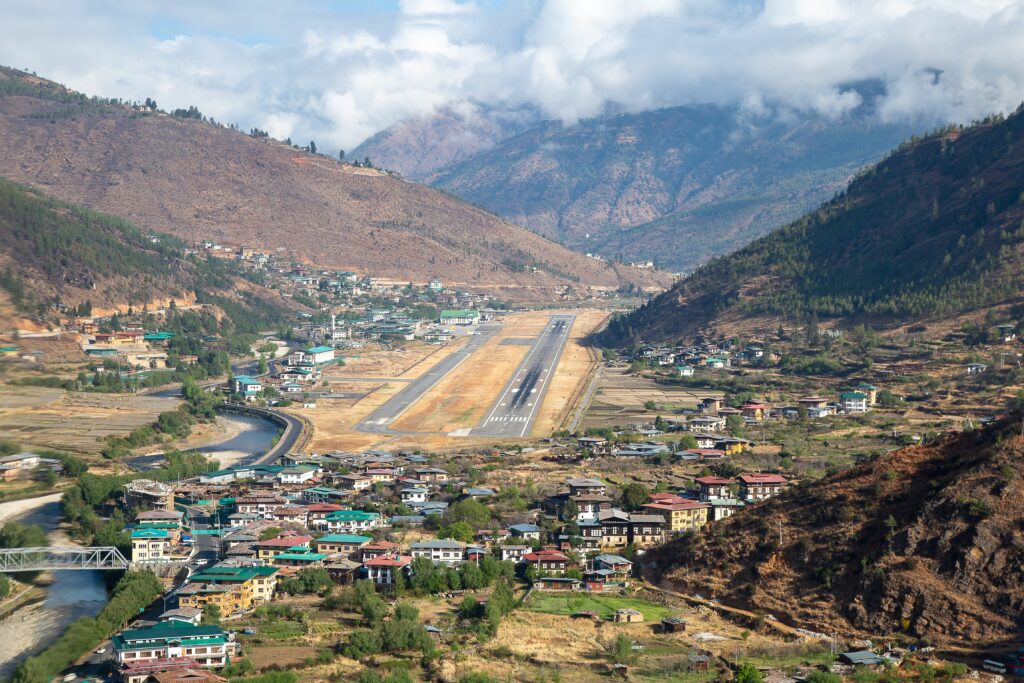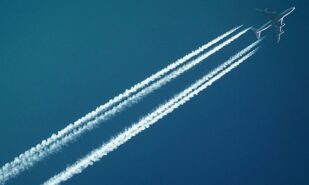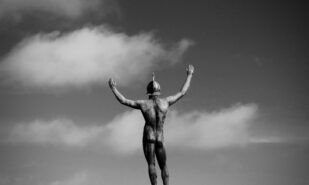From above the world looks calm and complete — altitude lends the illusion of harmony. Lakes gleam like vast mirrors, riverbeds wind as silver ribbons, and among the many shades of green that mark the patchwork of fields there are grey blots of towns from which roads radiate in all directions. Everything appears whole and ordered. But the moment the aeroplane enters a patch of turbulence, the harmony painted at altitude splits at the seams. You find yourself reflexively grabbing the back of the seat in front, tightening your seatbelt, listening for the metal of the fuselage creaking, and watching the cabin crew’s pragmatic composure — they simply stop serving drinks because they know: nothing terrible is happening. It is just turbulence.
Turbulence of reality
Strangely, most processes on Earth — whether the shifting of tectonic plates, oceanic tides, stock-market fluctuations, or nervous breakdowns — are already well documented and neatly structured. We can forecast earthquakes, predict the bitcoin exchange rate, and even guess when a Qing dynasty porcelain plate in the kitchen might shatter, granted there is one there. It seems the whole world has been nicely stacked on shelves. But as soon as the aeroplane flies into a storm cloud, one of the fundamental postulates of physics, the Navier–Stokes equation, collapses along with the illusion of an ordered world.
I cannot explain how, but this equation accounts for the motion of water in the ocean and of air around a wing, the eddies of smoke from a campfire and the birth of clouds in the sky. It models each drop and molecule not in isolation but as a single mass — a living body subject to various influences: velocity, pressure, friction, gravity. So long as the flow is smooth.

But sooner or later — we all get shaken. There are only five causes of turbulence, and they all reduce to one concept — Chaos. The first is associated with storm clouds — the anticipated obstacles on a chosen route. They are not terrifying, they do not look dangerous; they resemble entrance exams at a faculty of stress resistance. Pilots ask passengers to fasten their belts in advance, psychologists recommend breathing exercises, and lawyers advise reading contracts closely, especially the small-print footnotes. That is how one most effectively mitigates or prevents the consequences of shaking.
The second cause of turbulence in the air is atmospheric fronts, or rather the places where they meet. These are collisions of ideas, systems, and values. And although the pilots who guide us through reality know the aircraft will soon enter this zone, we still see family scandals, clashes between supporters, and revolutions. Rivers flow downstream, and a waterfalls fall from above — welcome to the whirlpool of events.
Mountain ranges are the third cause — more precisely, not the mountains themselves but the airflows that rise along their slopes and later drift down to their usual altitudes. The snow-capped peaks are already behind, beautiful especially from above; the plains have spread out like a carpet below — and then, all of a sudden, the plane starts to shake. An argument has ended, but hurtful words keep echoing in the mind; an important decision seems made, yet the inertia of old habits delays its implementation and continues to rock the air.
The most dangerous one though is clear-air turbulence or CAT for short. This predatory little “cat” appears utterly suddenly, when everything seems perfectly calm — sunlight is pouring through the windows, the passenger in 13B has dozed off over a book, the trolleys are already rolling down the aisle with fish or chicken — and at that instant the aeroplane drops sharply. Someone screams, someone else starts praying, a third person quickly switches on their phone camera, and God forbid the oxygen masks do not automatically drop, because then panic is inevitable. CAT is the betrayal of clarity; such shocks assail us constantly — an unexpected diagnosis, redundancy, betrayal. A terrorist attack… War…
Nobel laureate Richard Feynman called turbulence the most important unsolved problem of classical physics. Studies by teams of scientists have shown that the level of dangerous turbulence over the North Atlantic has increased by 55% in the last 40 years. In public life the figure is noticeably higher; the planet is being shaken even harder than a Boeing on final approach to Paro airport. Chaos has become the basis of the world order, and no scientist, no politician can currently suggest a way to escape it. We have lost the pilots who knew how to avoid shocks. The only advice on offer is to tighten your seatbelt and press yourself into your seat in terror.
The ancient Greek poet Hesiod began his Theogony with Chaos. But there the word did not mean absence of order so much as the primordial abyss, a yawning gulf from which everything else would emerge — Earth, gods, Heaven. A brief scroll through newsfeeds and the comments beneath them gives a steady impression: we are being dragged into that abyss with every means available, while kamikaze pilots sit at the controls of a shaking aeroplane.

Paro airport is in Bhutan; it is one of the most difficult airports in the world. The runway is placed in a narrow valley between mountains at over two thousand metres. A little more than a dozen pilots are licensed to operate there; once, while waiting for my flight to Kathmandu, I watched their training for three hours. To touch the tarmac smoothly one must fly the aircraft several times between the peaks, then, just before landing, turn almost ninety degrees, drop the machine sharply by some two hundred metres and level out at about a hundred metres above the ground. Autopilots do not work here; only a human being can do it. With the entire burden of responsibility for every single action.
Despite these difficulties, the persistent turbulence and the perilous glide path, pilots bring us into the Kingdom of Bhutan. Into a country that has a Ministry of Happiness. Into a country that was the first to propose measuring a nation’s welfare not by fluctuations in gross product but by an index of citizens’ life satisfaction. Right now, amid the great shaking, we could do with licensing some fifteen people globally who could take responsibility and gently land the planet in a utopia called Bhutan. Create not a Ministry of War but a Department of Wellbeing; dispatch humanitarian brigades to neighbours instead of sabotage units; fire not missiles from fighters but fireworks that delight children and adults. But the pilots at the controls are kamikazes, and ahead of us lies not Chaos but only the Abyss.
Oh, yes. There is a fifth kind of turbulence, when the aircraft finds itself in the wake left by the flight ahead at the same altitude. It seems we have just flown into such a wake: the cabin crew have asked us to stow the tray tables and close our laptops so that passengers don’t get drunk while the shaking continues.



